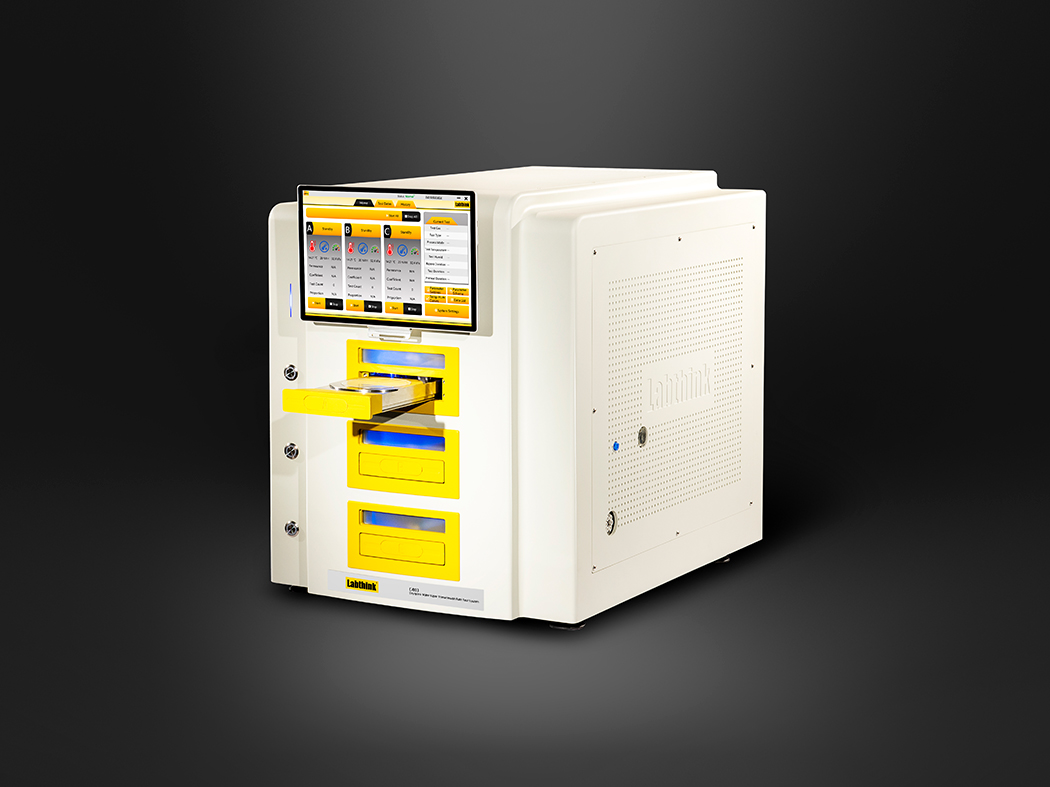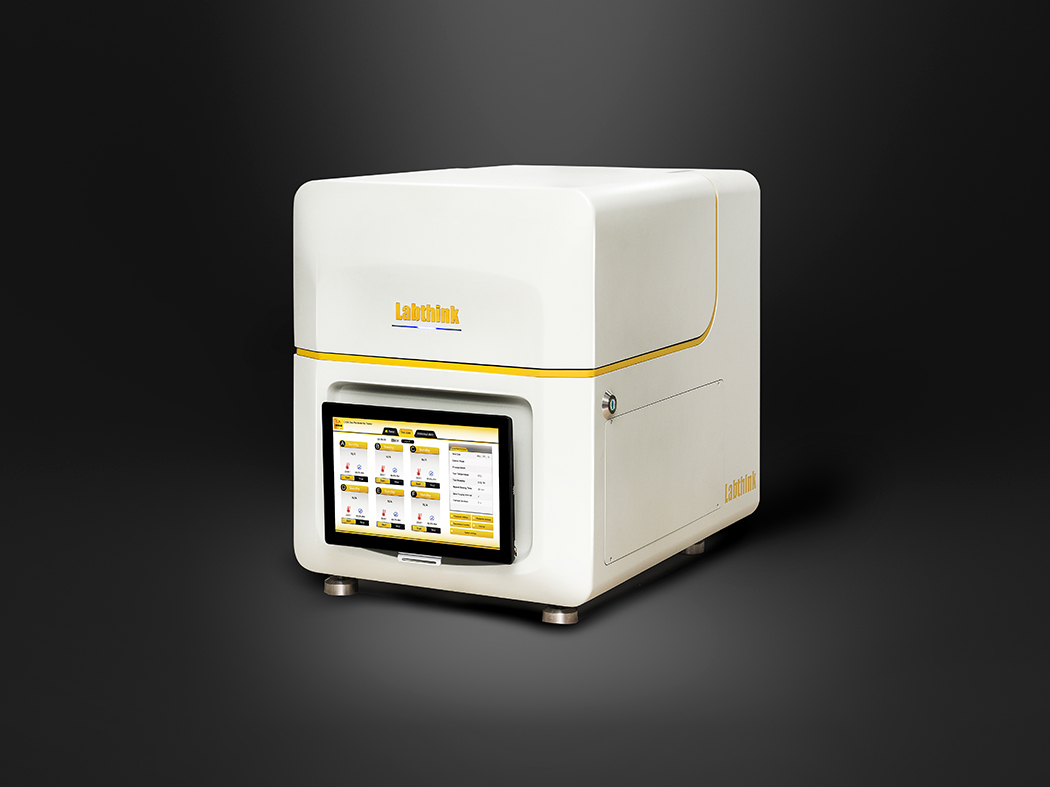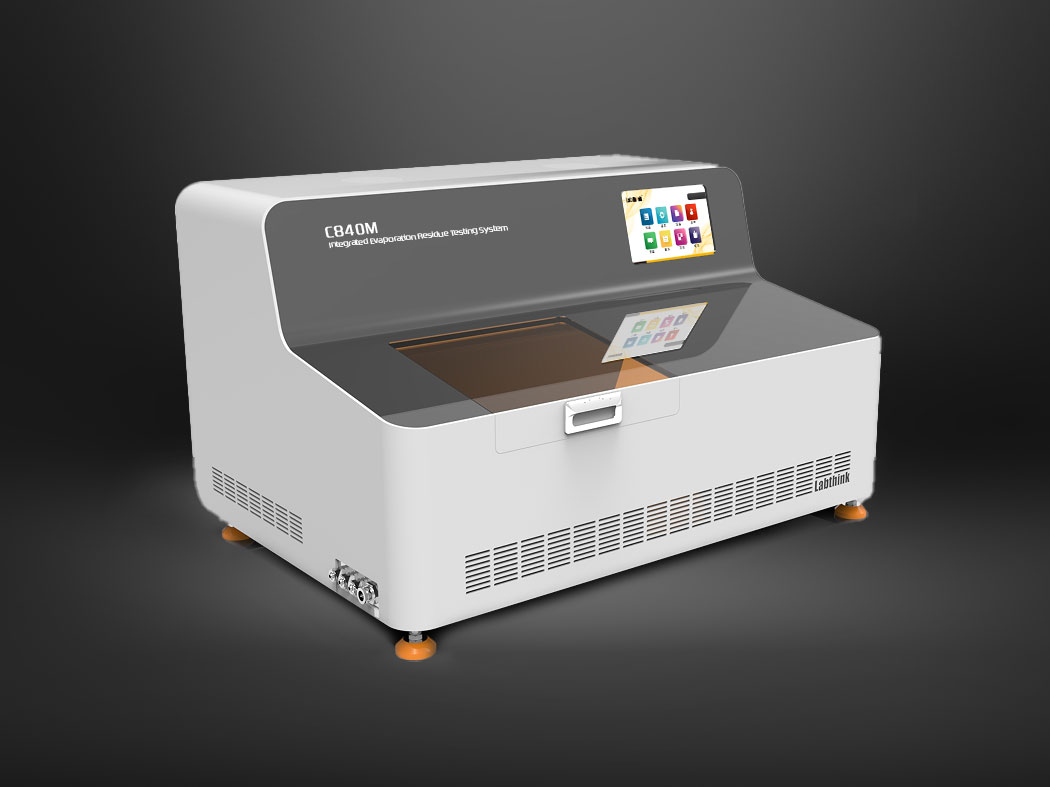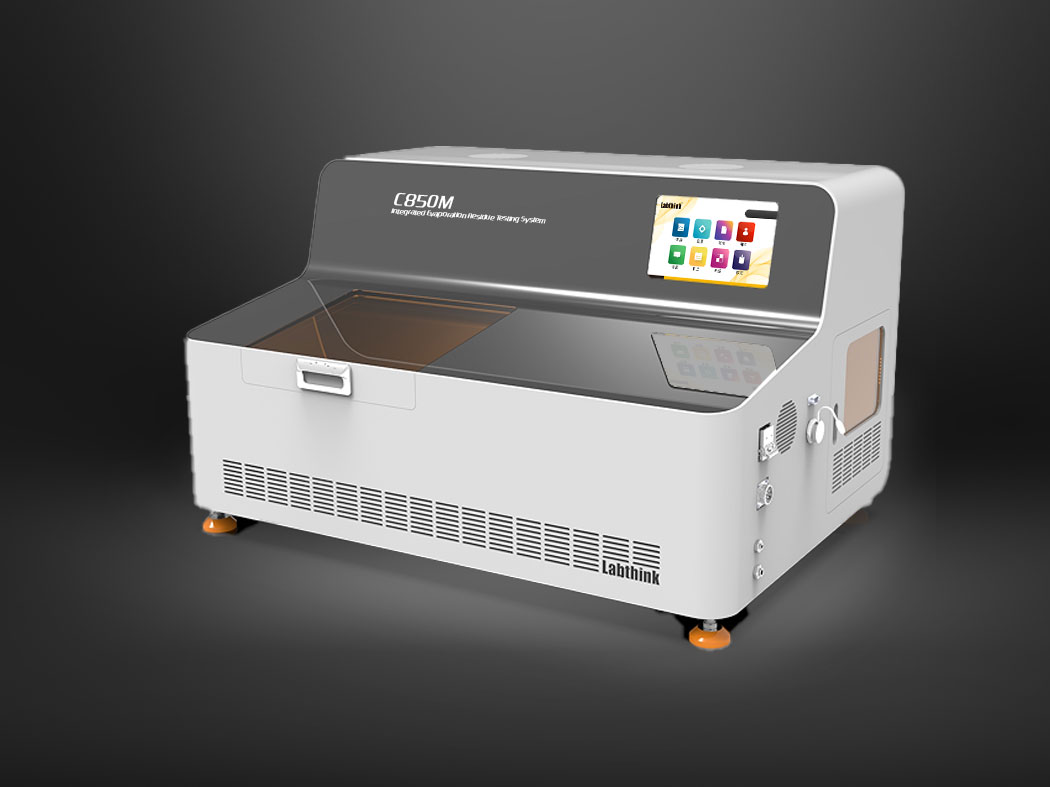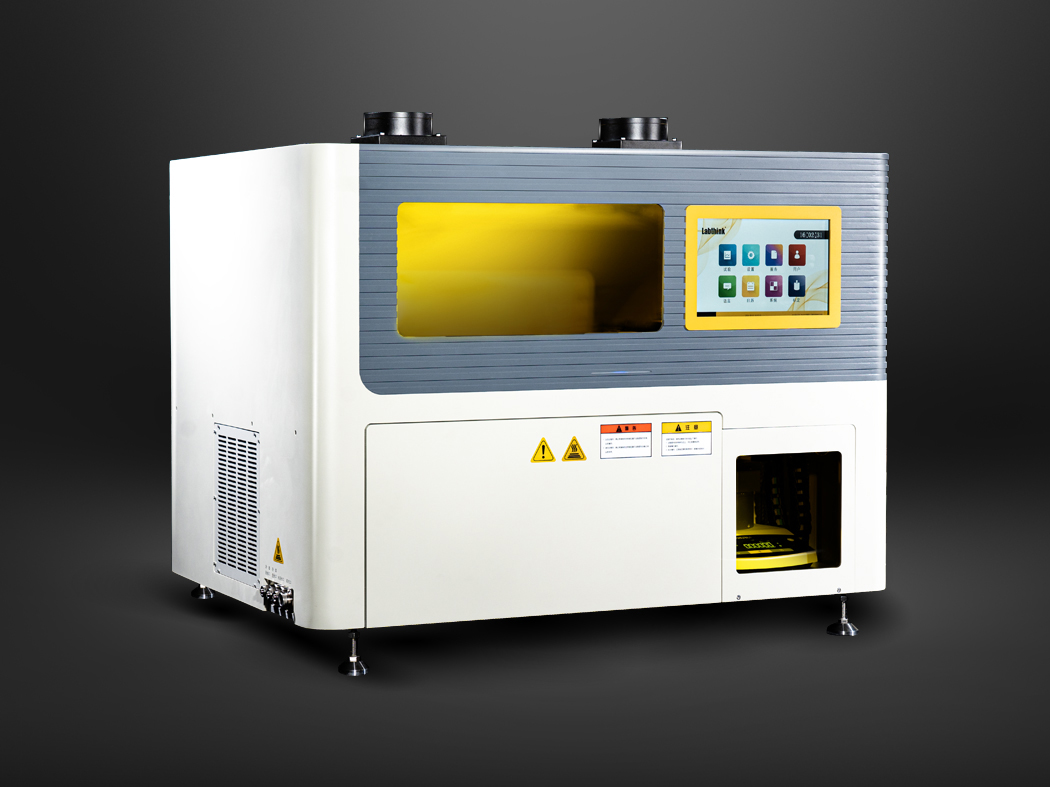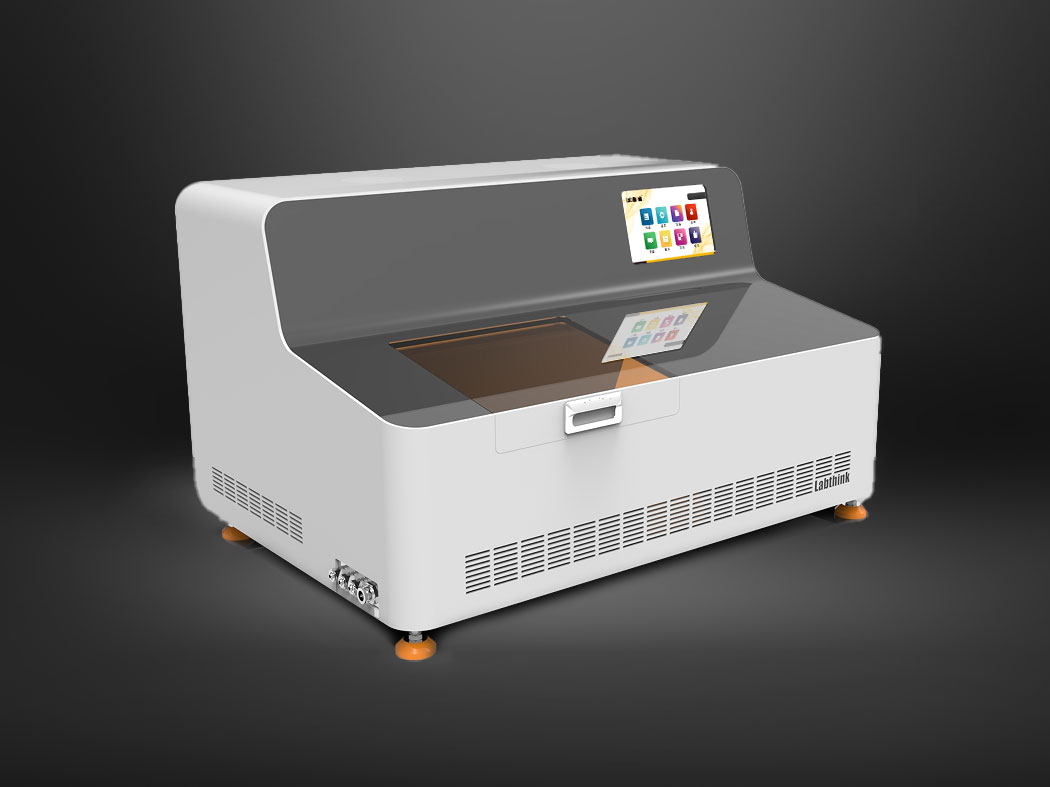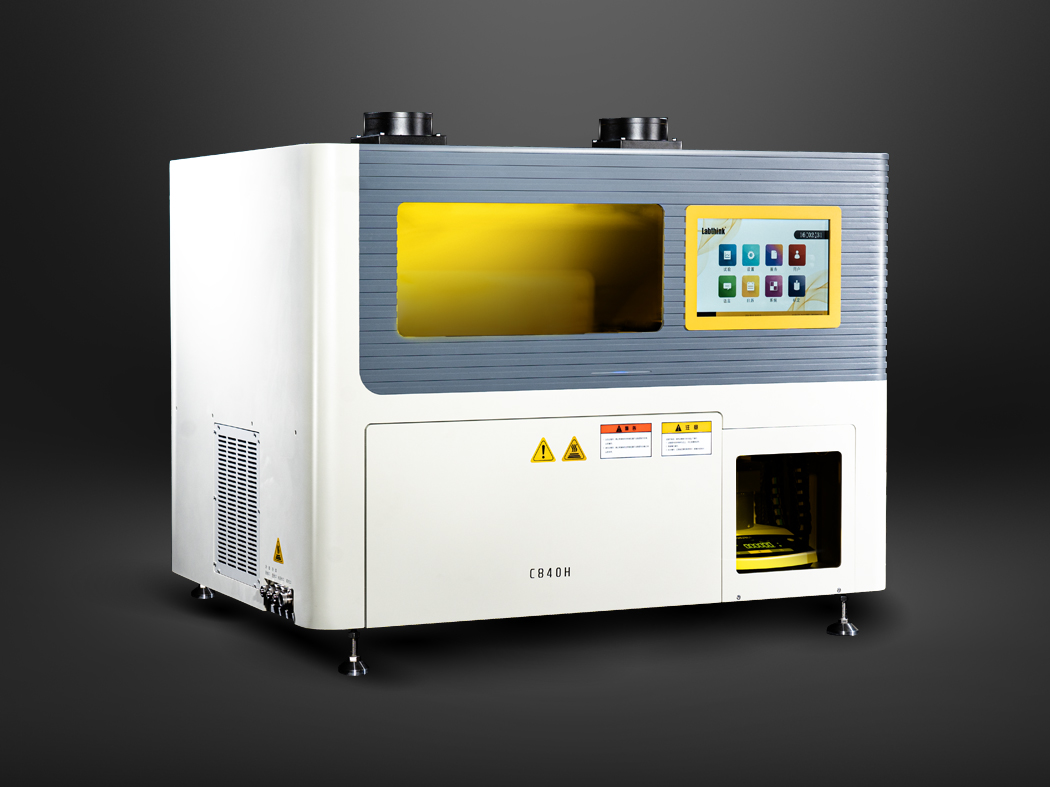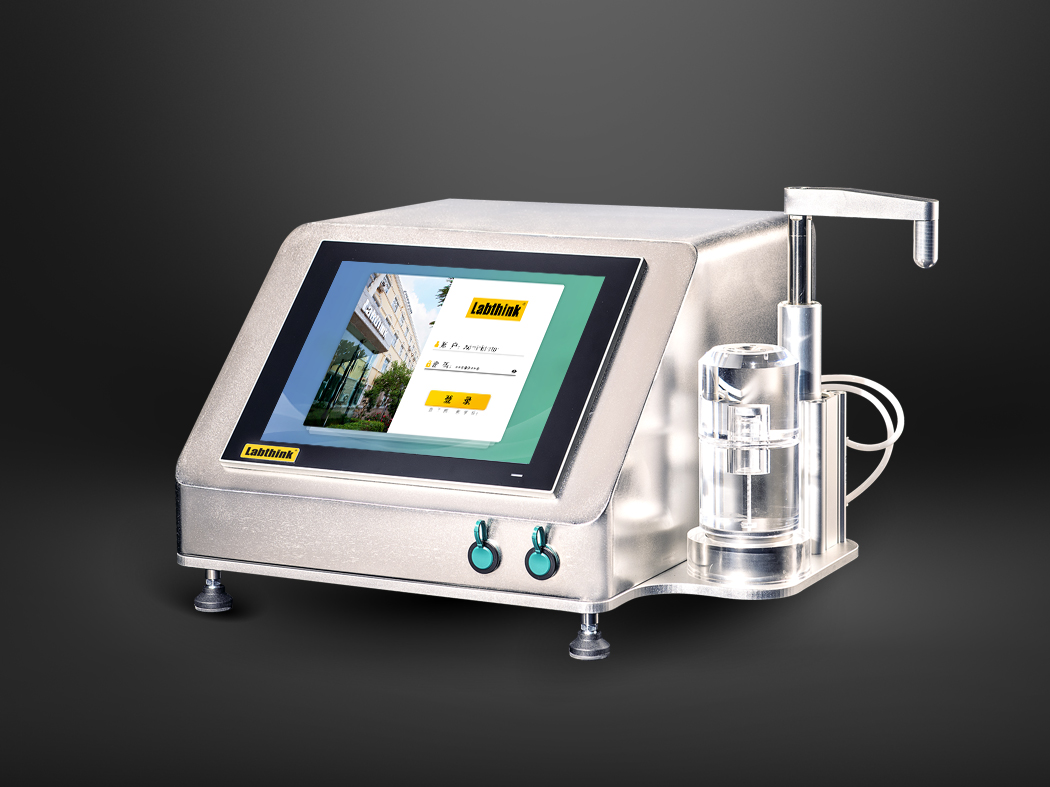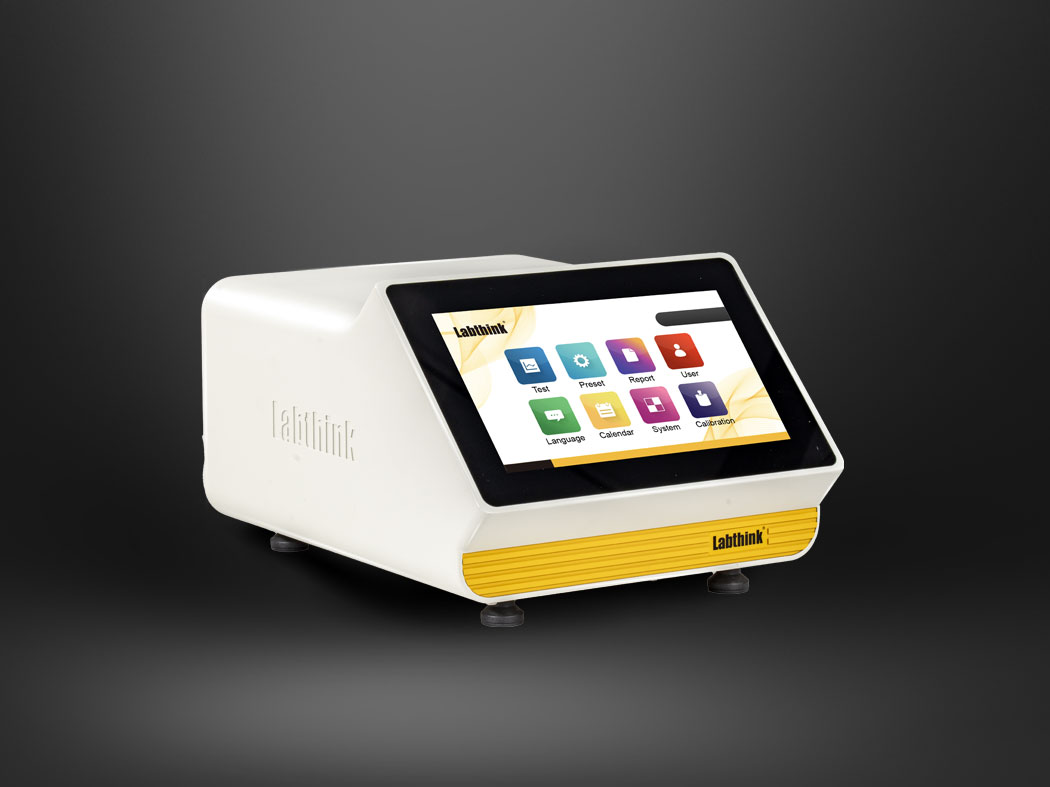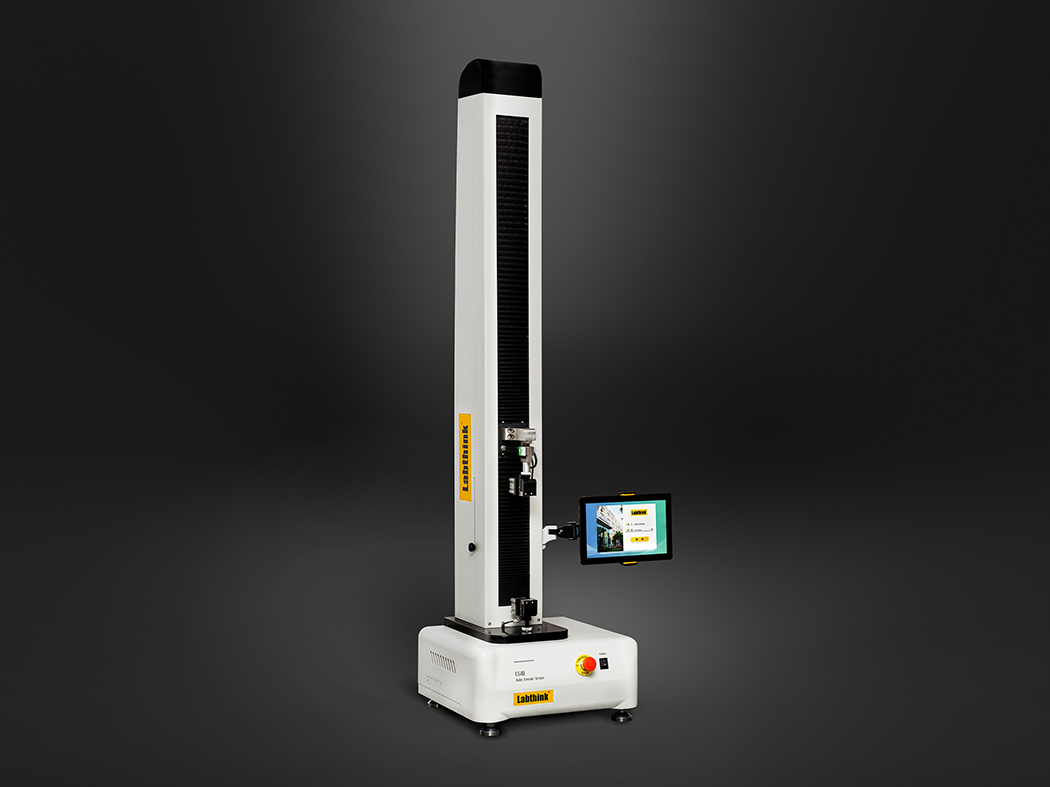| 摘要 | 本文(wén)詳細介(jiè)紹了 ASTM E 96 的內容,並(bìng)對於關鍵測試部(bù)分以及關鍵技術參數給予了(le)詳細(xì)的介紹。 |
|---|---|
| 關鍵字 | 袋類包(bāo)裝、鋁塑包裝、塑料複合包裝、鍍鋁包裝,發黴、黴變、漲袋(dài), 結塊、吸潮、潮解, 氧化、酸敗、哈喇味,堆碼(mǎ)破袋、封口開(kāi)裂(liè),漏氣、癟袋、析漿,滲油,異味,蒸煮變形,墨層脫色,科研院校解決方案,檢(jiǎn)測機構解決方案,稱重法(fǎ),增重法,減重法,透濕杯,測試環境,密封 |
| 文檔 | 點擊查看PDF文檔 |
ASTM E96 是稱重法測試標準之(zhī)一,它(tā)不但(dàn)詳細(xì)介紹了在(zài)其(qí)它標準中(zhōng)常見的增重法(Desiccant Method),而且還介紹了在透濕性測試領域中與增重法具有同等地位的減重法(Water Method)。
1、稱重(chóng)法概要
稱重法是一種獨立的透濕性測試方法,測(cè)試原理簡單明了:在規定的溫度、相對濕度(dù)下,使試(shì)樣(yàng)兩側(cè)保持一定的水蒸氣壓差,測(cè)量透過試樣的水蒸氣量,計算透濕性相關參數。稱重法可以分為(wéi)滲透進入透濕杯的增重法和滲透離開透濕杯的減重法兩種方法,它們的測試原理相同。
The purpose of these tests is to obtain, by means of simple apparatus, reliable values of water vapor transfer through permeable and semipermeable materials, expressed in suitable units. These values are for use in design, manufacture, and marketing.(進行這些試驗是為了通過簡單(dān)的設備獲得可信的可滲透材料以及半滲透材(cái)料的水蒸氣透過值。這些測試(shì)值將用於設計、生產以及商貿。)
2、增重法與減重(chóng)法的測試原理
ASTM E 96將增重法和減(jiǎn)重法都視為基礎測試方法。The test methods are limited to specimens not over 11/4in. ( 32mm ) in thickness……Two basic methods, the Desiccant Method and the Water Method, are provided for the measurement of permeance.(這兩種試驗方法可用於檢測厚度不大於 11/4in.(32mm)的試樣……增重法和減重法兩(liǎng)種基本方法都可以用來檢測(cè)試(shì)樣的水蒸氣透過係數。)
In the Desiccant Method the test specimen is sealed to the open mouth of a test dish containing a desiccant, and the assembly placed in a controlled atmosphere. Periodic weighings determine the rate of water vapor movement through the specimen into the desiccant.(在增重法中(zhōng),試樣被密封在裝有幹燥劑的透濕杯杯口處,然後將整套透濕杯組件放在控製環境(jìng)中。對透濕杯進行周期性稱重來(lái)確定透過試樣(yàng)被幹燥劑(jì)吸收(shōu)的(de)水蒸氣透(tòu)過率。)增重法測試原理可(kě)參見圖(tú)1。

圖 1. 增重法測試原理
In the Water Method, the dish contains distilled water, and the weighings determine the rate of vapor movement through the specimen from the water to the controlled atmosphere.(在減重法中,透濕杯中盛有蒸餾水,通過稱重數據確定從蒸餾水一側滲透通過試(shì)樣進入控製環境中的(de)水蒸氣透過率。)圖(tú)2 為減(jiǎn)重法測試原理圖。

圖 2. 減重法測試原理
The vapor pressure difference is nominally the same in both methods except in the variation, with extremes of humidity on opposite sides.(兩(liǎng)種測試方法的水蒸氣壓差(chà)相同,都是試(shì)樣(yàng)一側極濕而另一側極幹,隻是(shì)水蒸氣壓差(chà)相對於試樣的方向(xiàng)有變(biàn)化。)
這裏需要(yào)對稱重法的適用範圍加以說明: ASTM E 96不僅適用於檢測塑料薄膜、紙張、纖維板等(děng)包裝材料的水蒸氣透過率,而且還可(kě)以檢測gypsum(石膏)、plaster products(石膏製品)、wood products(木材製品)的透濕性,因此標(biāo)準中對試樣的厚度要求非常寬鬆。對於很厚的試樣(yàng),防止試樣出現邊緣(yuán)泄(xiè)漏是最(zuì)重要的一點。但(dàn)是在(zài)包材檢(jiǎn)測(cè)領域中很少會有很厚(hòu)的試樣,因此在之後的標準介紹中就不再涉及(jí)這(zhè)種厚度過大的建材檢測及其使用的相應設施,盡管這些也是ASTM E 96的(de)一部分內容。
3、試驗實現
進行稱重法(fǎ)試驗(yàn)至少需要以下 3部分設備組件:透濕杯、測試(shì)環(huán)境、以及稱重係統。
3.1 透濕杯
The test dish shall be of any noncorroding material, impermeable to water or water vapor. It may be of any shape. Light weight is desirable. A large, shallow dish is preferred, but its size and weight are limited when an analytical balance is chosen to detect small weight changes.(透濕杯應采用任何不腐蝕的、並且水或水蒸(zhēng)氣無法滲透的材料。它(tā)可以是任(rèn)意的形狀。最好重(chóng)量輕(qīng)。首選透(tòu)濕杯是(shì)大而淺的杯子,但是選定了用於檢測微小重量變化的分析天平後它的尺寸和重量也(yě)就受到了(le)一定的限製。)Different depths may be used for the Desiccant Method and Water Method, but a 3/4in. ( 19mm ) depth ( below the mouth ) is satisfactory for either method.(用於增重法和減重法的透濕杯(bēi)深度(dù)可以不同,但一(yī)般深度(dù)在(杯口之下) 3/4in.(19mm)對於兩(liǎng)種試驗方法(fǎ)都很合適。)
如果試樣容易皺折或是歪曲的話,需要(yào)在透濕杯(bēi)杯口上加一個外緣或是支架以起到支撐試樣的作用。一般情(qíng)況下,過薄的試樣多需要使用外緣或是支架來輔助試驗。
3.2 測試環境
在 ASTM E 96中使用測試腔來實現測(cè)試環境,要求溫度保持在±1℃之內,濕度保持在±2%RH之內。Air shall be continuously circulated throughout the chamber, with a velocity sufficient to maintain uniform conditions at all test locationss.(應在測試腔中(zhōng)保持空氣的持續循環,空氣循環的速度應能足(zú)以保持所有的測(cè)試位置狀態(tài)均一。)一般來講(jiǎng),由於進行(háng)透濕性測試的試驗溫度多要高於實驗室環境溫度,所以采用單加熱的方式來控溫的(de)比較多。
3.3 稱重係統
ASTM E 96 中是(shì)采用分析天平對透(tòu)濕杯進行(háng)稱重的(de),當然也可以采用其它的稱重方式。標準中對分析天平的靈敏度有一定的要求(qiú):The balance shall be sensitive to a change smaller than 1% of the weight change during the period when a steady state is considered to exist.(當認為水蒸氣的滲透已經進入穩定狀(zhuàng)態後,天平對重量變化的靈敏度要(yào)小於在一(yī)段時間內重(chóng)量變化的1%。)因(yīn)此,如果你采用的分析天平的靈敏度較(jiào)高,那麽相應的(de)稱重(chóng)間隔時間就可以比較短,如果(guǒ)你采用的分析天平的靈敏度較低,相應的稱重間隔時間就要延長了很多。采用高精度分析天平或(huò)是(shì)其它的(de)高精度稱重(chóng)係統,對提高試樣的透濕性測試精度以及縮短試驗時間都(dōu)是有益的。
4、製樣
The material shall be sampled in accordance with standard methods of sampling applicable to the material under test. The sample shall be of uniform thickness. If the material is of nonsymmetrical construction, the two faces shall be designated by distinguishing marks.(應按照當前試樣的相關取樣標準進行(háng)材料試樣的製取。試樣應厚度均一。如果試樣為非對稱結構,應使用指定符號對試樣兩麵加以(yǐ)區分。)Test specimen shall be representative of the material tested.(測試試樣應該能夠代表當前測試的材料。)在ASTM E 96 中對在不同情況下的試樣製取數目以及試驗方式都有詳細規定。
Attach the specimen to the dish by sealing ( and clamping if desired ) in such a manner that the dish mouth defines the area of the specimen exposed to the vapor pressure in the dish. Thoroughly seal the edges of the specimen to prevent the passage of vapor into, or out of, or around the specimen edges or any portion thereof.(通(tōng)過密封(如果需要可用夾緊方式)將試樣與(yǔ)透濕杯裝夾在一起,這樣透濕杯的杯口就確定了試樣的試驗麵積。完全密封試樣的邊緣以防止水蒸氣進入、離開、在試(shì)樣邊緣周圍或(huò)它的任何部分。)
試樣裝(zhuāng)夾效果的好壞將直接影響到試驗結(jié)果的準(zhǔn)確性,其(qí)中最關鍵的一點就是試樣(yàng)邊緣的密封。蠟封和使用密封圈密封是常用的兩種密封(fēng)方式。
蠟封(fēng)工(gōng)藝比較複雜,先要按照一定的比例配製密封蠟,並將配(pèi)製(zhì)好的蠟加熱到熔化狀態,再將(jiāng)蠟澆灌到透濕杯的邊緣處以密封試(shì)樣,待蠟(là)冷卻定型後再清理透濕杯的邊緣。應當(dāng)特別注意的是當密封蠟的配製成分不同時,在試(shì)驗過(guò)程中蠟的揮(huī)發重量也(yě)不相同,這就會直接影響試驗結果的準確性。
密封圈密封的適應性、可操作性要比蠟封好的多。Gasketed types of seals are also in use on appropriately designed dishes. These simplify the mounting of the specimen, but must be used with caution, since the possibility of edge leakage is greater with gasketed seals than with wax seals.(使用密封圈的密封方式在一些設計適(shì)當的透濕(shī)杯中也有應用。這簡化了試樣的裝備,但應小心使(shǐ)用,因為使用密封圈的密封方式出現邊緣泄漏的可能性比使用密封蠟要大。)
裝夾完(wán)成的試樣可參見圖 4。

圖 4. 減重(chóng)法試樣裝夾示意圖(tú)
5、試驗過程
整(zhěng)個試(shì)驗過程可以分為(wéi)試(shì)樣的平衡、進行周期(qī)性稱重以判斷試樣是否已經達到了滲透平衡,當試樣(yàng)達到滲透平(píng)衡後即可停止試驗。
5.1 增(zēng)重法的試驗過程(chéng)
Fill the test dish with desiccant……Leave enough space so that shaking of the dish, which must be done at each weighing, will mix the desiccant. Attach the specimen to the dish and place it in the controlled chamber……Weigh the dish assembly periodically, often enough to provide eight or ten data points during the test. At first the weight may change rapidly; later a steady state will be reached where the rate of change is substantially constant.(向透濕杯中添(tiān)加幹燥(zào)劑(jì)……留出足夠的空間(jiān)以滿足搖(yáo)動透濕杯混合杯內(nèi)幹燥(zào)劑的(de)目的,這一步是每次稱重都必須要做的。將試樣裝夾在透濕杯(bēi)上,並將裝夾有試樣的透濕杯放進測試腔中……對透濕杯進(jìn)行周期性稱重,需要在整個試驗中獲得8到(dào)10組數據(jù)。一開始重量可能會迅(xùn)速變化;之後會達到一(yī)個(滲透)穩定的狀態,這時的變化率就非常穩定了。)
5.2 減重法的試驗過程
Fill the test dish with distilled water……The air space thus allowed has a small vapor resistance, but it is necessary in order to reduce the risk of water touching the specimen when the dish is handled. Such contact invalidates a test on some materials such as paper, wood, or other hygroscopic materials. Attach the specimen to the dish. Weigh the dish assembly and place it in the controlled chamber on a true horizontal surface.(向透濕杯中添(tiān)加蒸餾水……留出的空氣隙可有(yǒu)很小的水蒸氣阻抗性能,但是(shì)空氣隙的存在可減小在(zài)處(chù)理透濕杯時水接觸到試樣的風險。這種接(jiē)觸可以使得對(duì)一些材料的試驗直接無效,例(lì)如紙張、木材、以及其它吸濕性材料。將(jiāng)試樣裝夾在透濕杯上。稱量(liàng)試樣、透濕杯組合的重量並將它放(fàng)置在測試(shì)腔中絕(jué)對水平的表麵上。)之後的試驗過程與增(zēng)重法完全一致:對透濕杯進行周期性稱重,直至重(chóng)量變化率保持恒定。
5.3計算結(jié)果
ASTM E 96將試驗過程分為增重法和減重法兩部分介(jiè)紹,但是數據處理方法是一致(zhì)的。
Calculate the water vapor transmission, and permeance as follow.(按照下式計(jì)算(suàn)水蒸氣透過率(lǜ)和水蒸氣透過係數。)

- G = weight change ( from the straight line ), g(從直線段獲得(dé)的重量變化量,單(dān)位是g)
- t = time, h(時(shí)間(jiān),單位為h)
- G/t = slope of the straight line, g/h(直(zhí)線段的斜率,單位是g/h)
- A = test area ( cup mouth area ), m2(測試麵積(杯口(kǒu)麵積),單(dān)位是m2)
- WVT = rate of water vapor transmission, g/h·m2(水蒸氣透過(guò)率,單位是g/h·m2)

- p = vapor pressure difference, mmHg(水蒸氣壓差,單位是mmHg)
- S = saturation vapor pressure at test temperature, mmHg(在試驗溫度下的飽和蒸汽壓(yā),單位是mmHg)
- R 1 = relative humidity at the source expressed as a fraction ( the test chamber for desiccant method; in the dish for water method )(在水蒸氣(qì)一側的相對濕度,表示為百(bǎi)分數(對於增重(chóng)法是指(zhǐ)測試腔中的相對濕度,對於(yú)減重法是指透濕杯(bēi)中的相對濕度))
- R 2 = relative humidity at the vapor sink expressed as a fraction(在水蒸(zhēng)氣(qì)吸收側的相對濕度,表示為百分數)
處理數據通常有兩種方式:一(yī)種是圖形分析(xī),另一種是數字分析。當然(rán)現在結(jié)合最先進的計算機數據分 析(xī)處理,不但可以將精確稱重采點的間隔無限縮小,更能“圖文並茂”地(dì)進行數(shù)據分析, Labthink TSY-T1和TSY-T3的監控(kòng)軟件(參見(jiàn)圖5)不但具有強大(dà)的數據分(fèn)析采集功能,而(ér)且還具有作圖、數據統計分析等功能。

圖(tú) 5. Labthink TSY-T3監控軟件
6、注(zhù)意事項(xiàng)
6.1 測試環境的選擇
A permeance value obtained under one set of test conditions may not indicate the value under a different set of conditions. For this reason, the test conditions should be selected that most closely approach the conditions of use.(在一組試驗條件下得到(dào)的水蒸氣透過係數(shù)值不一定能表示(shì)試(shì)樣在其它不同的試驗條件下的水蒸氣透過係數值。因此,所選擇的試驗條件應該是最接近實際(jì)使(shǐ)用條(tiáo)件的。)在ASTM E 96的附錄中給出了(le)幾組標準的試驗條件以供用戶選擇(zé)。
6.2 試樣裝夾可能引起誤差
When the specimen area is larger than the mouth area, this overlay upon the ledge is a source of error, particularly for thick specimens. The overlay material results in a positive error, indicating excessive water vapor transmission. The magnitude of the error is a complex function of the thickness, ledge width, mouth area, and possibly the permeability.(當試樣麵積大於杯口麵積時(shí),試樣在透濕杯邊緣的覆蓋(gài)就成為一個誤差來源,尤其是對於較厚的試樣。試樣覆蓋(gài)將導致一個正向誤差,表示有額外的水蒸氣(qì)透過。誤差的大小是試樣厚度、邊緣(yuán)寬度、杯口麵積、可能還包括(kuò)水蒸(zhēng)氣透過量的綜合影響。)
6.3 試驗時間
早期的稱重法設備(bèi)采用的分析天平普遍精度(dù)不(bú)高,而(ér)且人工操作的稱重過(guò)程可能會給試樣的滲透平衡造成一定的影響(如果稱(chēng)重過程能在測試環境中完(wán)成的(de)話,這種影響將小一些),因此使用早期稱重法設備的測試時(shí)間一般較長,一個中阻隔試樣(yàng)的試驗時(shí)間往往就要長達幾天。如今的全自動稱重法透濕儀通過改良(liáng)稱重過程使(shǐ)其不但能在(zài)控製環境中(zhōng)完成而且可由設備自(zì)動(dòng)實現,並采(cǎi)用高(gāo)精(jīng)度測重元件,完(wán)成同種中阻隔試樣的時間也就是幾(jǐ)小時。
6.4 dummy試樣
When results of water vapor transmission are expected to be less than 0.05 perm, a dummy specimen is strongly recommended. Such a dummy specimen should be attached to an empty cup in the normal manner. The environmental effects of temperature variation and buoyancy variability due to barometric pressure fluctuation can be arithmetically tared out of the weighing values. This precaution permits earlier and more reliable achievement of equilibrium conditions.(如果預計試(shì)樣的水蒸氣透過係數低於0.05 perm(本標(biāo)準中1 perm是5.7×10 -11 kg/Pa·s·m2),強烈推薦使用dummy試樣。將試樣按照通常的裝夾方法(fǎ)裝夾在空透濕杯上。溫度變化以及由於大氣壓變化引起的浮力變化的這些環境影(yǐng)響可以(yǐ)在稱重數據中去除掉。這樣做可使得判斷進入平衡狀態的時間更早(zǎo)而且更加可靠。)As a further precaution when gasketed seals are used instead of preferred sealants, a blank test run is suggested using glass or metal as a dummy specimen.(當使用密封(fēng)圈來代替首選的密封(fēng)劑,建議(yì)使用玻璃(lí)或是金屬作為dummy試樣進行空白試驗。)
7、總結
ASTM E 96是目前編寫全麵的稱重法(fǎ)測試標準之一,現(xiàn)做簡要總結:稱(chēng)重法分為增(zēng)重(chóng)法和減重法兩種,它們的測試原理相同;透濕(shī)杯、測試環境、稱重係統是完成稱重法的三大主要(yào)元件,缺一不可;試(shì)樣裝(zhuāng)夾過程繁雜,裝(zhuāng)夾效果卻直接影響試驗結果;dummy試樣的試驗結果對試驗結果的分析及計算(suàn)影響很大(dà),采用專業軟件將提供強大的數據分析(xī)功能。

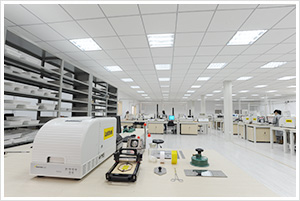
 濟(jì)南MD传媒视频新聞中心包含公司動態、公告、產品(pǐn)新(xīn)聞等多種模塊,為您展示最新、最全的企業資訊,讓您了解更多包裝檢測行業的最新技術。
濟(jì)南MD传媒视频新聞中心包含公司動態、公告、產品(pǐn)新(xīn)聞等多種模塊,為您展示最新、最全的企業資訊,讓您了解更多包裝檢測行業的最新技術。 LabthinkMD传媒视频擁有完(wán)善的服務體係,百餘人的專業服(fú)務團隊,能以多種語言通過電話、網絡、移動平台、現場等多種途徑為(wéi)全(quán)球用戶提供真誠、專業(yè)、及時、持續的服務和技術支持。
LabthinkMD传媒视频擁有完(wán)善的服務體係,百餘人的專業服(fú)務團隊,能以多種語言通過電話、網絡、移動平台、現場等多種途徑為(wéi)全(quán)球用戶提供真誠、專業(yè)、及時、持續的服務和技術支持。

